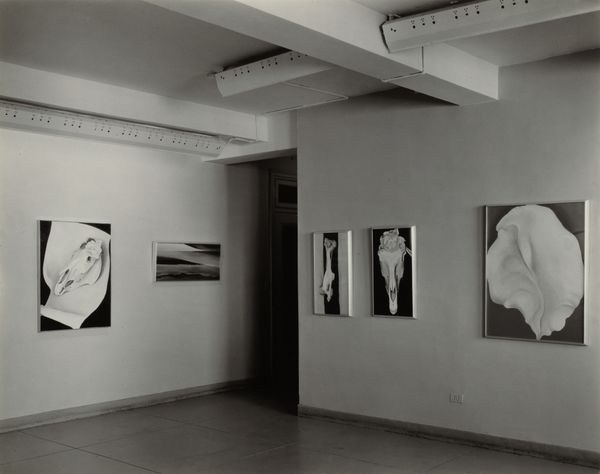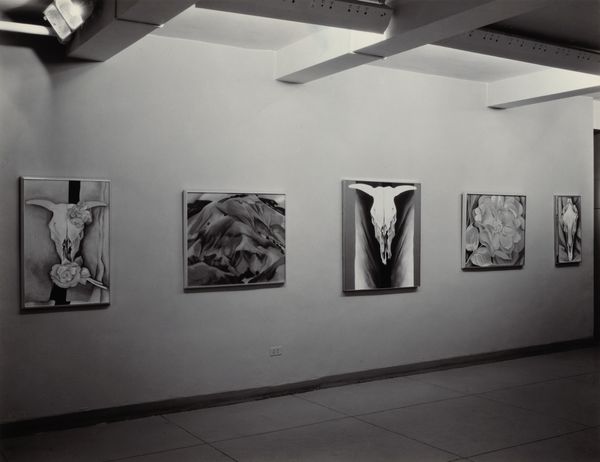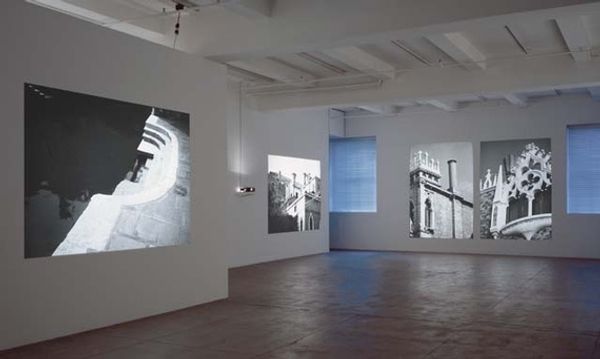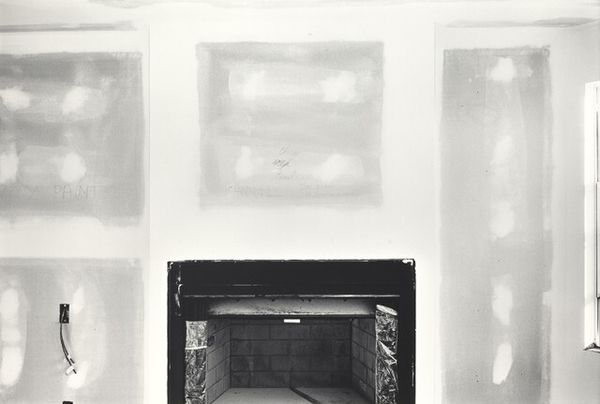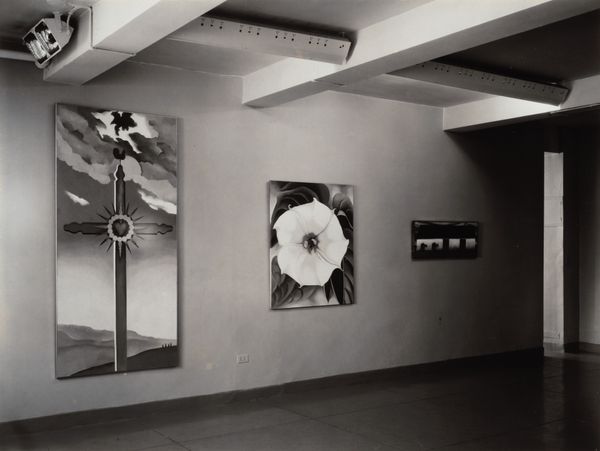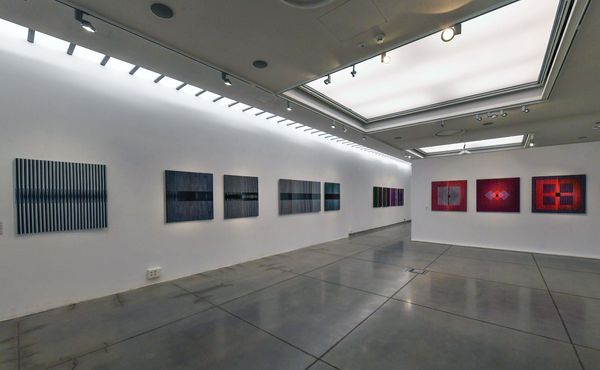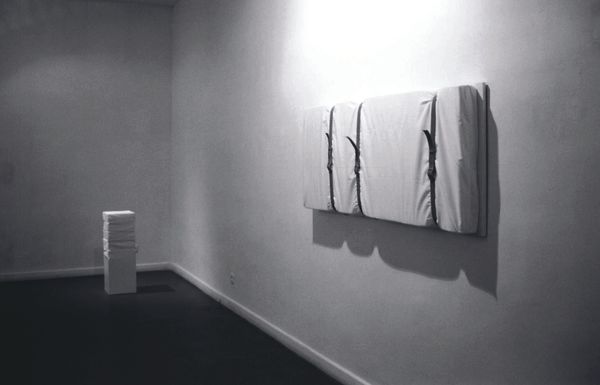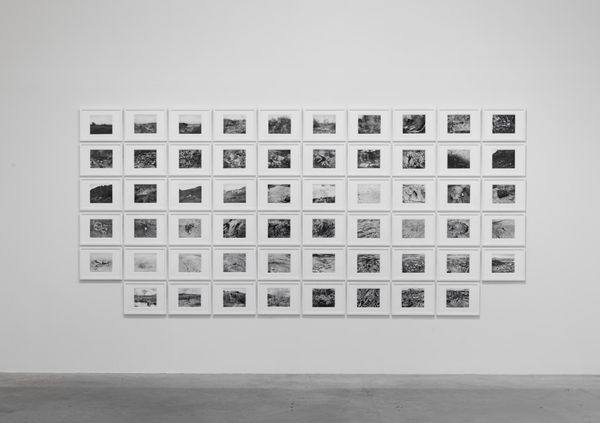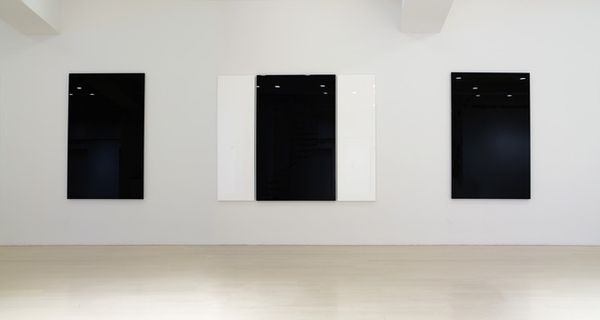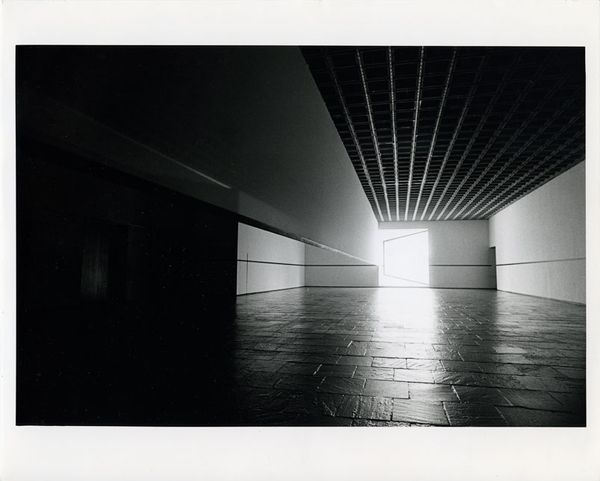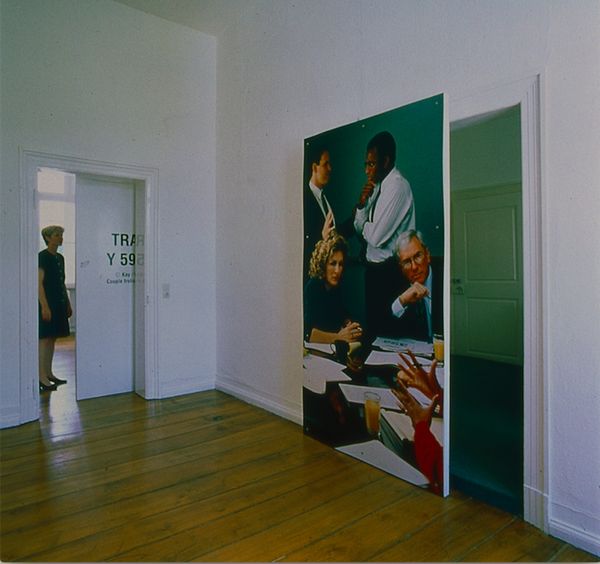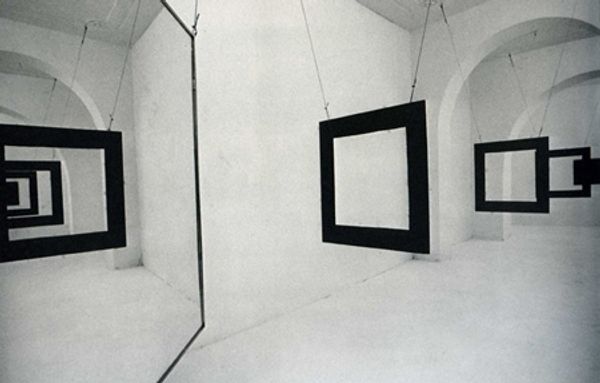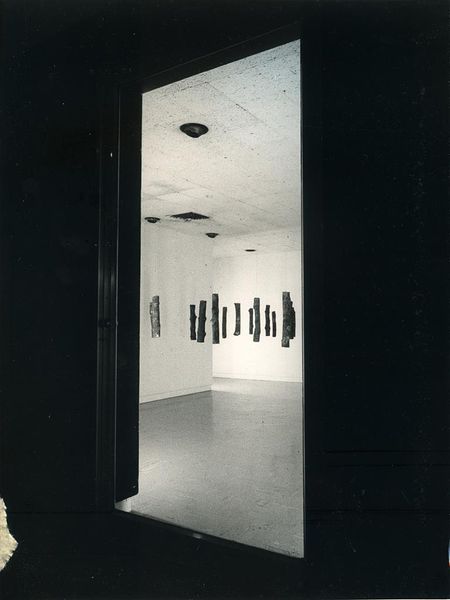
Dimensions: sheet (trimmed to image): 16.7 x 22.8 cm (6 9/16 x 9 in.) mount: 56.4 x 45.2 cm (22 3/16 x 17 13/16 in.)
Copyright: National Gallery of Art: CC0 1.0
Curator: Let's focus on this photograph, taken by Alfred Stieglitz in 1931, documenting Georgia O'Keeffe's exhibition at An American Place. It offers a fascinating glimpse into the presentation of her work. Editor: It’s stark. The monochrome palette feels deliberate, amplifying the quiet intensity within the gallery space. The contrast between the dark artworks and the stark white walls creates a kind of…void. What was Stieglitz trying to capture, beyond a record of the exhibition itself? Curator: Well, An American Place, his gallery, was incredibly influential in shaping the public perception of modern art in America. Stieglitz meticulously curated these shows to promote artists he believed in, O'Keeffe, of course, being foremost among them, his wife, so the show and photography were quite political. It speaks to the construction of O’Keeffe's artistic persona as well. Editor: Absolutely, it's almost a performative act of curation on his part. Knowing their relationship, I can’t help but consider the power dynamics at play. Was Stieglitz presenting O’Keeffe's work, or controlling its narrative in a way that served his own artistic and social agenda? These installations reinforced gendered readings that haunt her even now. Curator: I think that's a valid critique. We see that here: a female artist promoted by her male partner and, more broadly, how museums and gallery systems can legitimize certain artistic voices while marginalizing others. What strikes you about the choice of artwork? Editor: The sharp geometric abstractions contrast heavily with the organic forms; all unified in this space of "whiteness" – literally and figuratively. This exhibition says "modern". It presents her exploration of form and her rebellion against traditional representation but flattens those complex approaches through the limitations of his frame. It creates a powerful statement of art moving towards abstraction. Curator: Seeing the photograph and exhibition today, what would you like people to consider, knowing that it does not exist now? Editor: That institutions—including the framing by individuals with power like Stieglitz—are never neutral. The question "Who is seen, how, and by whom?" has profound implications for art history and culture. Curator: That pushes us to analyze these historical presentations, and to reflect on how our own present day galleries might reflect this history today.
Comments
No comments
Be the first to comment and join the conversation on the ultimate creative platform.
